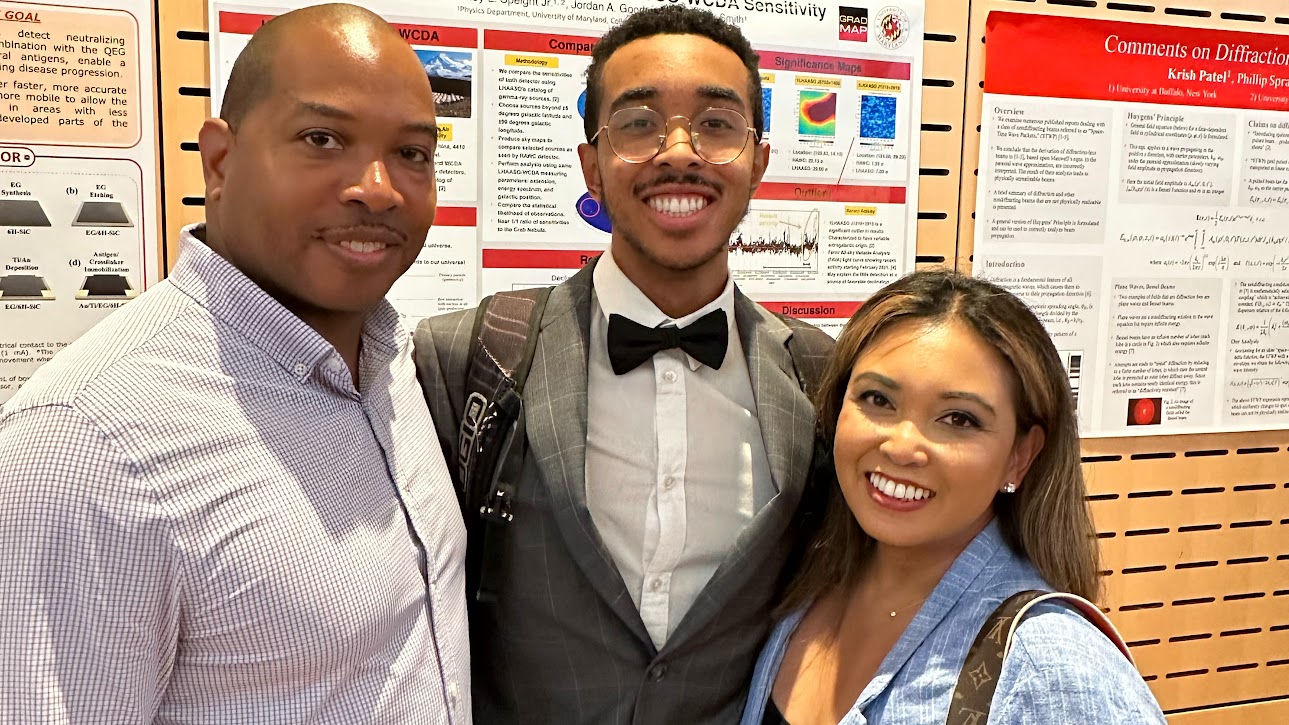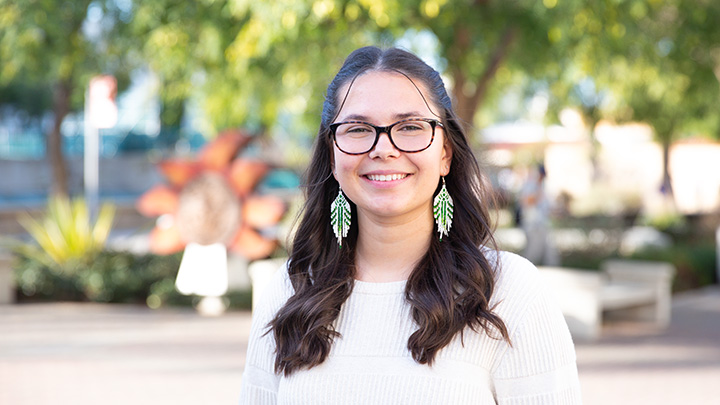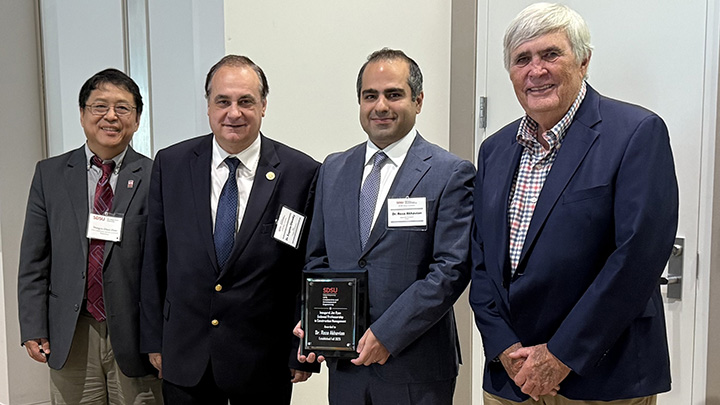Stellar student aims to have an astronomical impact
Budding astrophysicist Rodney Speight Jr. is an exemplary student who conducts research that is out of this world

This story first appeared on SDSU NewsCenter February 26, 2024.
Rodney Speight Jr. is a third-year physics major and mathematics minor whose work is beyond extraordinary. While exploring the mysterious origins of the universe, he works to promote minorities in STEM as Black Student Science Organization (BSSO) treasurer, vice president of Schwartz Astronomical Society and a Physics-Astronomy CalBridge scholar.
Speight’s research focuses on gamma rays, forms of energy emitted by high-energy astronomical objects like pulsars, black holes and supernovae.
“When you observe a huge change in a region where a gamma ray source is located, it could mean that there is a black hole or a new pulsar there,” he said. “This type of research sheds light on a range of cosmic phenomena in the most intense regions of the universe.”
Coding the Cosmos
For his most recent project, Speight spent summer 2023 examining gamma ray sources as part of the University of Maryland’s Graduate Resources for Advancing Diversity with Maryland Astronomy and Physics (GRAD-MAP) program which promotes underrepresented students in astronomy and physics.
Speight was tasked with comparing discoveries made with the internationally operated High-Altitude Water Cherenkov (HAWC) Gamma-Ray Observatory, located in Puebla, Mexico, to data recently released from China’s Large High Altitude Air Shower Observatory (LHAASO), located in Sichuan.
Conducting extensive data analysis involving numerous calculations and hours of coding, he helped gather data to inform on the strengths and weaknesses of the two detectors’ sensitivity to certain parts of the sky. This allowed for a better understanding of optimal locations to place future ground-based gamma ray detectors and which regions of the universe to target.
His work included investigating outlier data points that represented gamma ray sources detected by LHAASO but not by HAWC. To find out why, the team examined one particular source, 1LHAASO J1219+2915.
“I created hundreds of significance maps, mapping out the galactic sky,” Speight said. “That would take hours or days, so sometimes I had to run my code overnight while I slept.”
The LHAASO data was taken over a shorter time period than the HAWC data was, and this analysis suggested that the source was stronger during the LHAASO observation period.
“This was super interesting because no one but LHAASO had data on this source yet,” Speight said. “We found that it’s an extragalactic, possible variable origin source, meaning it comes from outside our galaxy.”
 Speight and his parents, Rodney Speight Sr. and Wyme Speight, attend the Final Presentation Symposium at University of Maryland, where he and the other interns showcased their work via oral and poster presentations.
Speight and his parents, Rodney Speight Sr. and Wyme Speight, attend the Final Presentation Symposium at University of Maryland, where he and the other interns showcased their work via oral and poster presentations.
He has presented his findings multiple times since the summer and received special mentions for influencing the team to look into these possible variable sources, which are often overlooked as researchers typically focus on larger sources in more familiar regions of the sky. Speight’s advisers for this project were UMD distinguished professor Jordan Goodman and UMD research scientist Andrew Smith.
Making a Mentor
Speight credits the early influence of great mentors for leading him to this path. This includes Dorian Bohler, a physicist at Stanford’s SLAC National Accelerator Laboratory, whom Speight met after his parents enrolled him in the Berkeley Alumni Kappa League mentorship program led by members of the historically Black fraternity Kappa Alpha Psi.
While Speight was in high school, Bohler allowed him to work with him on a research project, launching a domino effect of opportunities and new mentorship experiences. He introduced Speight to another student, Gokul Srinivasaragavan, who later went to UMD for graduate school and connected Speight to the GRAD-MAP program.
“My mentor taught me that it is important to lift up the younger generation who may think it is not possible, who see a classroom and think, ‘No one in here looks like me, so how could I make it?’” Speight said. “I know how discouraging that can feel so it is really important to be seen and to be in organizations that push for diversity and excellence in science, showing that we can be in these fields and be successful at the same time.”
Speight aims to continue researching and go on to graduate school before earning his Ph.D. His first piece of advice for students interested in similar paths is to be observant and diligent when it comes to looking for opportunities that could help further their skills and experience.
“Also, one of the biggest things I try to live by is that hard work is everything,” he said. “It is one thing to be talented or extremely smart but that can only get you so far if you are not willing to put in the work. Like me, I am not the best mathematician, not the best physicist but I will outwork anybody. It is not all about your grades and what you are on paper; it is about what you are willing to put forward.”



